The Endomembrane System of Eukaryotic Cells
The Endomembrane System of Eukaryotic Cells
Overview of the Endomembrane System
The endomembrane system is essential for various cellular processes in eukaryotic cells, comprising several interconnected organelles.
Components of the Endomembrane System
Plasma Membrane: The outer membrane that encloses the cell, regulating the entry and exit of substances.
Chloroplast Membranes: Comprises outer and inner membranes that house chlorophyll and facilitate photosynthesis.
Mitochondrial Membranes: Consists of outer and inner membranes involved in cellular respiration and energy production.
Golgi Membrane: A system involved in modification, sorting, and secretion of cellular products.
Nuclear Membrane: Encloses the nucleus, separating it from the cytoplasm.
Endoplasmic Reticulum (ER) Membrane: A network for protein and lipid synthesis, including rough and smooth ER.
Vacuolar Membrane: Encloses vacuoles that store substances.
Lysosomal Membrane: Contains digestive enzymes for breaking down macromolecules.
Functions of the Endomembrane System
Compartmentalization: Maintains distinct environments for different cellular processes.
Allows for generation of ion/proton gradients.
Separates toxins from the cytoplasm.
Creates compartments with varying pH values and enzyme compositions.
Import and Export of Molecules: Facilitates the movement of smaller (e.g., ions, nutrients) and larger entities (e.g., protein complexes, viruses, pathogens, symbionts) into and out of the cell.
Metabolic Functions: Supports the synthesis, modification, and breakdown of various biomolecules.
The Endoplasmic Reticulum (ER)

Rough ER:
Involved in protein synthesis on ribosomes attached to its surface.
Proteins synthesized are packed into vesicles for transport out of the ER.
The ER membrane is continuous with the nuclear envelope.
Smooth ER:
Responsible for lipid synthesis.
Protein Glycosylation
Sugar residues may be attached to proteins in the ER; these modified proteins are known as glycoproteins.
Glycoproteins may be embedded in the plasma membrane or function elsewhere in the cell.
Protein glycosylation is an example of post-translational modifications of proteins.
modification on and in the ER
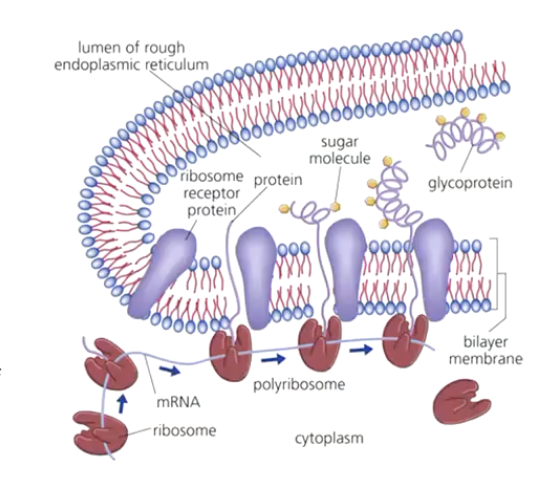
Protein Transport to the Golgi Apparatus
The ER delivers proteins to the Golgi apparatus for further processing.
Rough ER → Cis Golgi → Trans Golgi
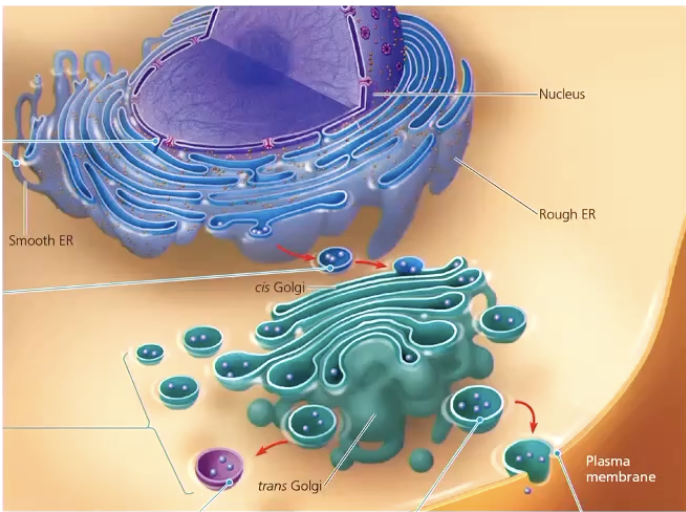
The Golgi Apparatus
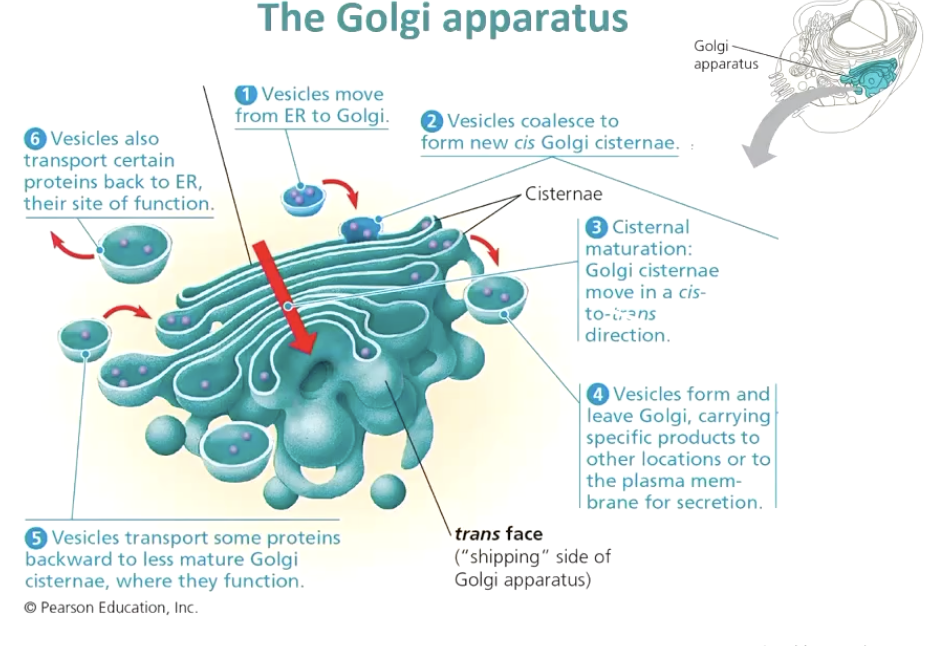
Identified by Italian pathologist Camillo Golgi in 1898, it plays a central role in modifying, sorting, and packaging proteins.
Structure and Function
Cis Face: The receiving side of the Golgi apparatus where vesicles from the ER fuse and deliver proteins.
Trans Face: The shipping side where vesicles bud off, carrying products to different destinations, including the plasma membrane for secretion.
Processes in the Golgi Apparatus
Vesicles transport proteins from the ER to the Golgi.
Vesicles coalesce to form new cis Golgi cisternae.
Cisternae mature from cis to trans.
Proteins are sorted as they travel through the Golgi.
Some vesicles transport proteins back to the ER.
Exit from the Golgi Apparatus
Proteins are categorized based on their function:
Exported Proteins: Those that exit the cell.
Retained Proteins: Those that remain within the cell.
Lysosomes
Function in the digestion of complex materials including food and damaged organelles.
Phagocytosis Process:
Lysosome contains active hydrolytic enzymes.
It fuses with a food vacuole.
Hydrolytic enzymes digest food particles.
Autophagy
Lysosomes degrade damaged organelles as follows:
A lysosome fuses with a vesicle containing damaged organelles.
Hydrolytic enzymes digest the components.
Lysosomal Functions
Degradation of Ingested Components:
Components from endocytosis are sent to lysosomes for breakdown.
Lysosomes function in acidic conditions (pH 4.5-5.0) and house various hydrolytic enzymes (nucleases, proteases, lipases, glycosidases).
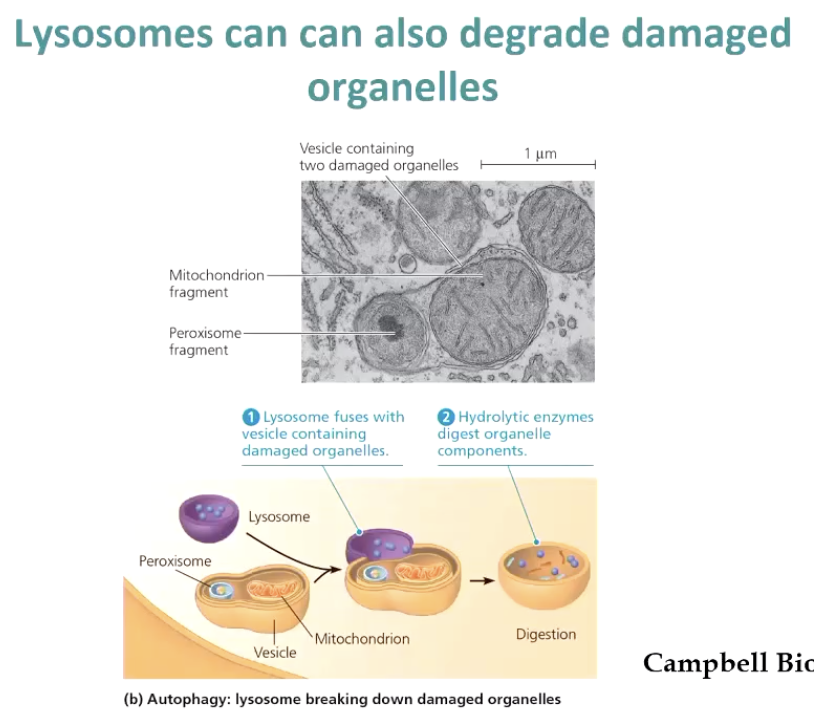
The Plant Vacuole
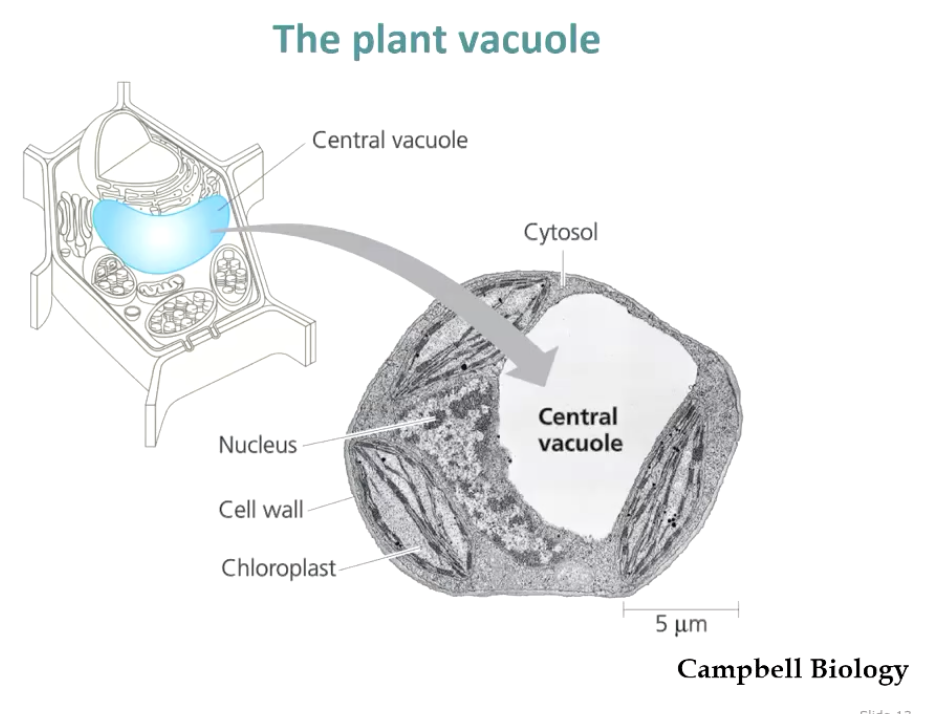
Functions in plant and fungal cells akin to lysosomes in animal cells.
Contains hydrolytic enzymes and serves as a degradative compartment.
Storage Functions: Vacuoles occupy 30-90% of cell volume, storing nutrients, pigments, and waste materials.
Can store proteins and anthocyanins contributing to petal color.
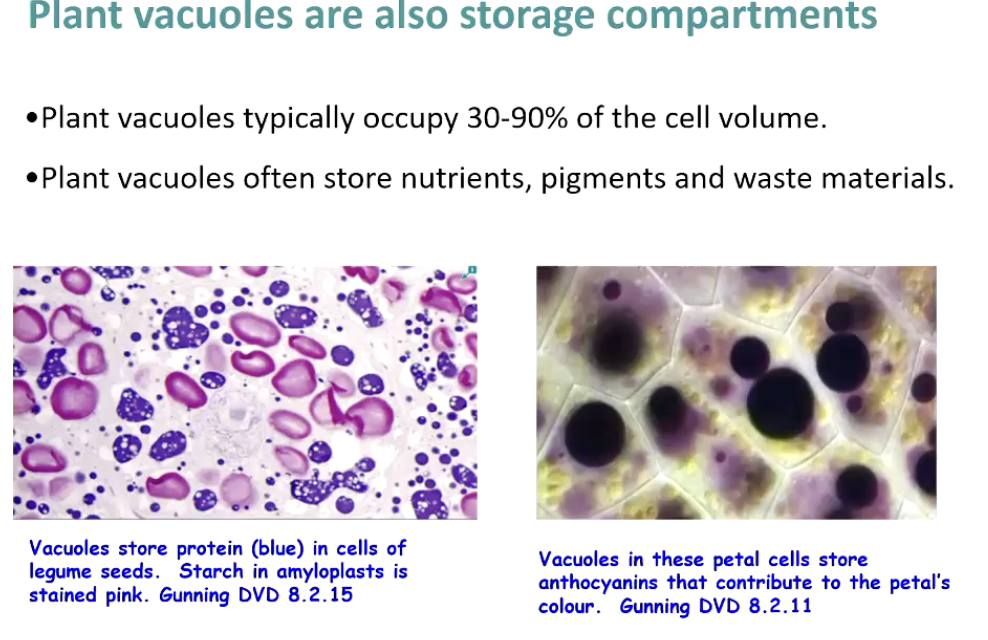
Peroxisomes
Organelles that deal with degradation processes in cells, especially in metabolic pathways. (deal with glycolate)
Roles in Plants: Associated with the oxygenase reaction of Rubisco, participating in photorespiration.
Roles in Animals: Oxidatively degrade fatty acids.
Characteristics: Spherical to sausage-shaped, surrounded by a single membrane, contain oxidative enzymes that generate hydrogen peroxide during reactions.
Catalase breaks down hydrogen peroxide into water and oxygen within peroxisomes.
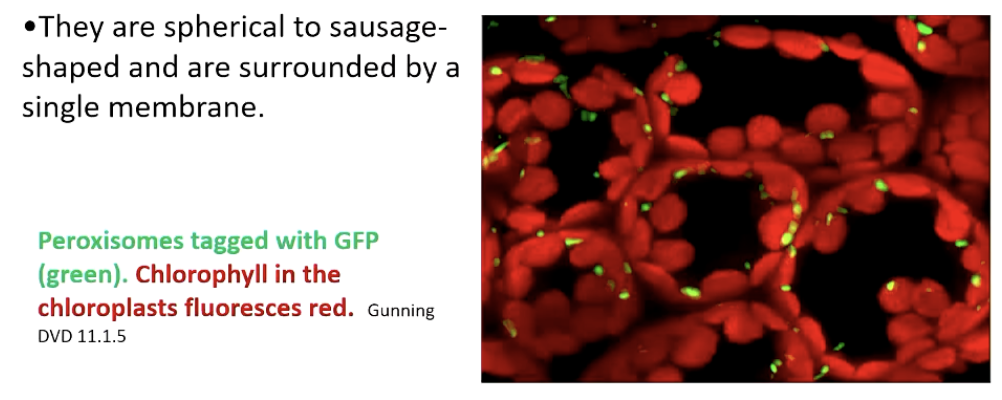
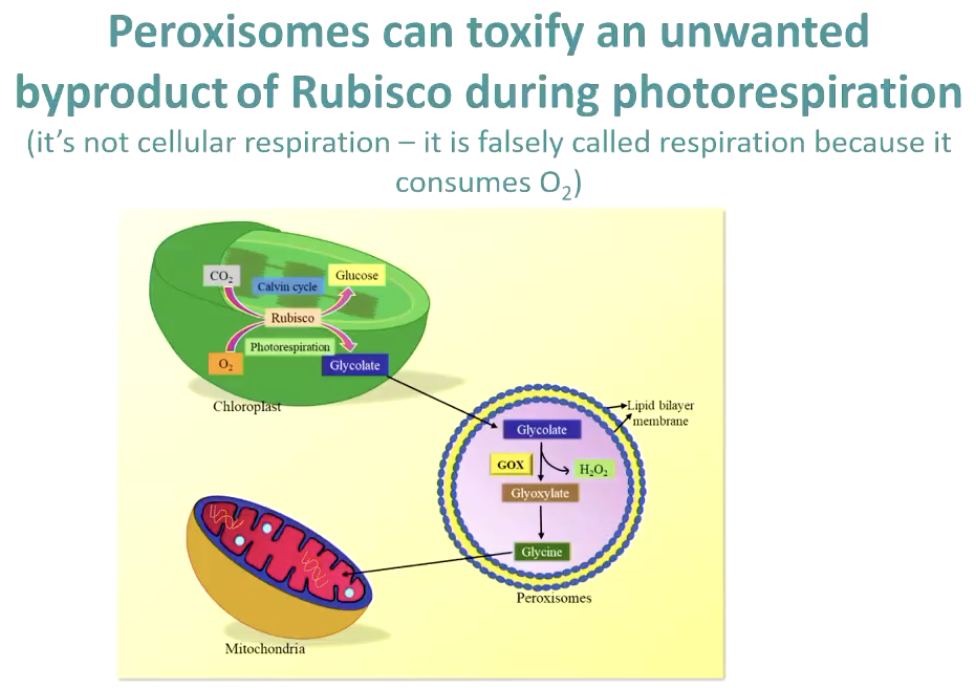
Major Concepts of the Endomembrane System
Ribosomes: Sites for protein synthesis; ribosomal subunits are formed in the nucleolus and transported into the cytoplasm.
Endoplasmic Reticulum (ER): A network assisting in protein and lipid synthesis with distinct roles for smooth and rough ER.
Golgi Apparatus: Processes and sorts proteins and glycoproteins received from the ER.
Protein Secretion: Vesicles transport proteins and polysaccharides to the plasma membrane or internal compartments through endocytosis.
Degradation Sites: Lysosomes and vacuoles are principal locations for degrading unwanted materials and recycling components.
Peroxisomes: Located in both animal and plant cells; collaborate with chloroplasts and mitochondria in metabolic processes.